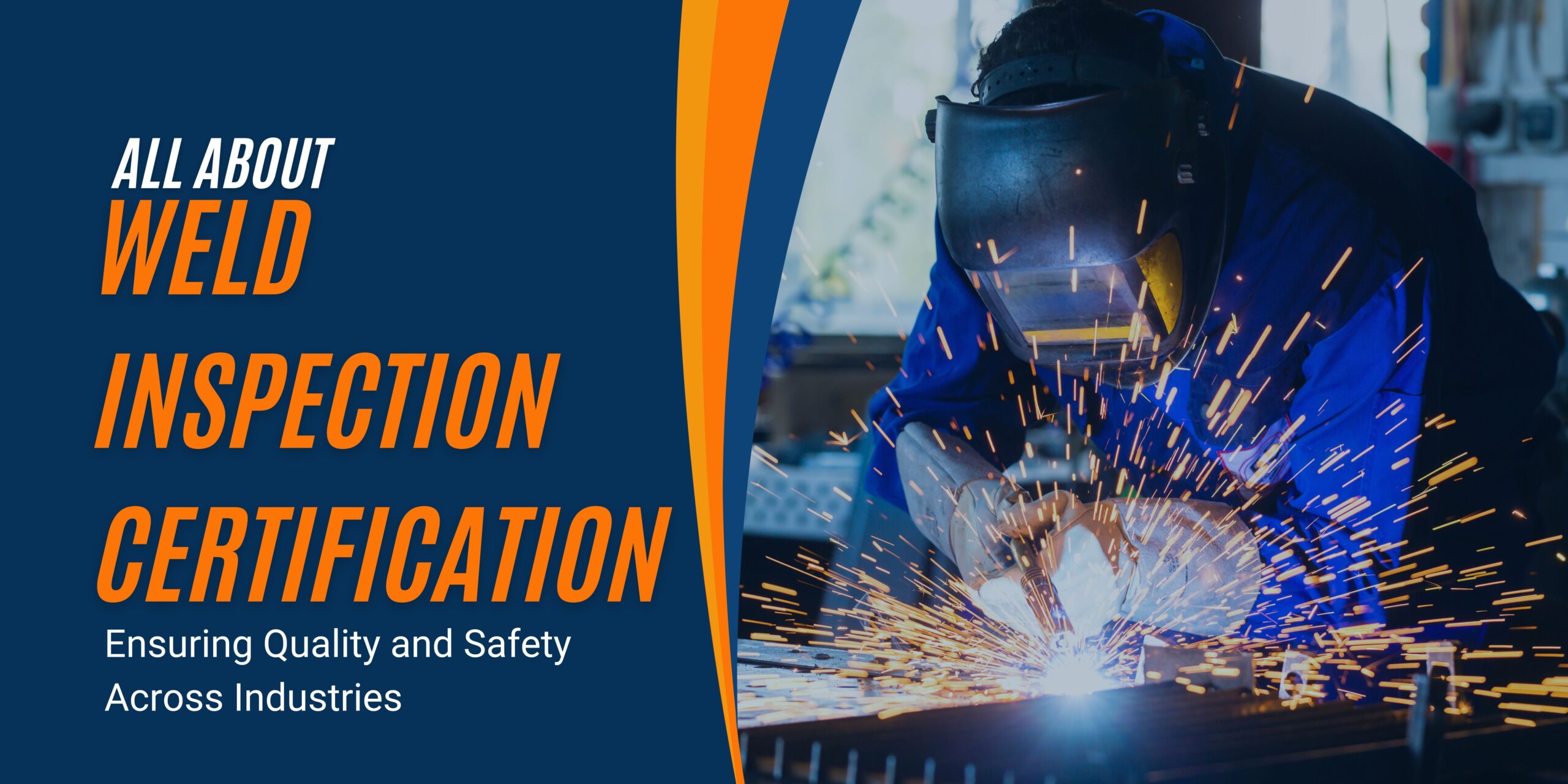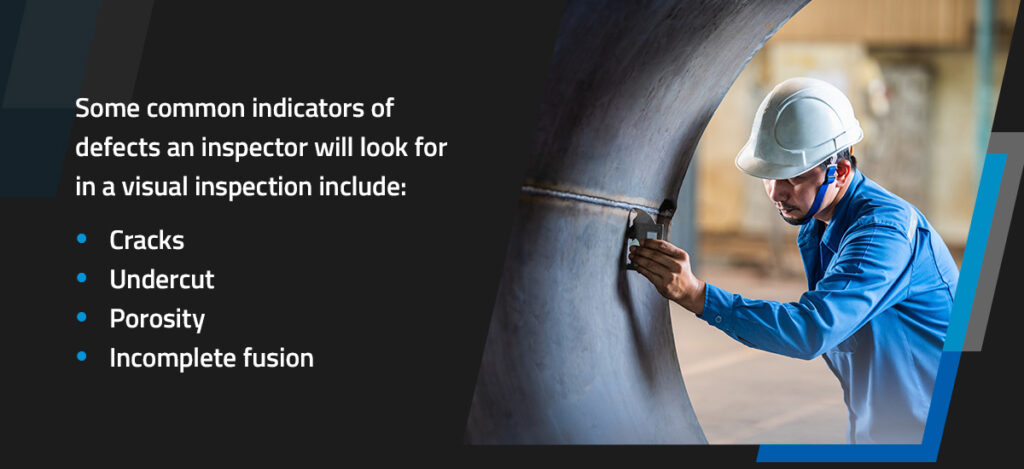The Function of Welding Inspection Racine in Fighting Structural Failures
The Function of Welding Inspection Racine in Fighting Structural Failures
Blog Article
Ingenious Approaches to Fillet Weld Evaluation and Screening: Enhancing Weld High Quality and Conformity Specifications
In the world of welding, the high quality and integrity of fillet welds play an important duty in guaranteeing the architectural stability and reliability of different commercial components. With the constant drive for improved efficiency and compliance with strict standards, the expedition of ingenious strategies to fillet weld inspection and screening has become vital. As sectors advance, the standard approaches may no longer be enough in meeting the demands of contemporary welding applications. By welcoming advanced innovations and techniques, a new perspective of possibilities arises in the world of weld quality assessment and adherence to conformity standards.
Advanced Non-Destructive Testing Methods
Making use of modern modern technologies, progressed non-destructive screening methods play an essential function in guaranteeing the stability and quality of fillet welds. These approaches, such as phased range ultrasonic screening (PAUT) and magnetic fragment testing (MPT), deal in-depth insights right into the weld's inner framework without triggering any kind of damage to the product. PAUT, as an example, utilizes multiple ultrasonic elements to inspect the weld from various angles, offering a comprehensive visualization of possible problems like absence of blend or cracks.
Similarly, MPT works in identifying surface-breaking flaws by applying an electromagnetic field and iron particles to the weld area. This method is specifically helpful for determining suspensions that may compromise the weld's strength. By utilizing these advanced non-destructive screening strategies, weld examiners can precisely assess the top quality of fillet welds, guaranteeing conformity with market criteria and policies. The ability to identify imperfections early on not only improves weld quality however also prevents expensive rework or failings in architectural honesty, highlighting the importance of these innovative screening approaches in welding assessments.
Robotics and Automation in Assessment
The integration of robotics and automation has reinvented the inspection process for fillet welds, boosting performance and accuracy in quality analysis. Robotics use precise control and repeatability in examining welds, guaranteeing trustworthy and consistent outcomes. Automated systems can be set to adhere to specific assessment paths, guaranteeing extensive coverage of welds and decreasing the danger of human error.
Robot assessment systems furnished with advanced sensing units can detect and gauge weld functions with high accuracy, offering in-depth data for evaluation. These systems can identify problems such as splits, lack of combination, and porosity, enabling prompt corrective activities to be taken. Furthermore, robotics and automation enable real-time information collection and evaluation, offering prompt feedback to operators and promoting quick decision-making processes.
In addition, using robotics and automation in fillet weld examination boosts total efficiency by decreasing assessment times and raising examination throughput. By streamlining the evaluation process, manufacturers can make sure weld high quality and conformity requirements are fulfilled effectively, eventually causing set you back savings and boosted item quality.
Using Expert System for Evaluation
Fabricated knowledge plays a pivotal function in improving the efficiency and accuracy of evaluation in fillet weld evaluation procedures. By harnessing the power of AI, examiners can simplify the analysis of weld quality and conformity requirements, causing a lot more specific and dependable outcomes. AI algorithms can quickly process substantial amounts of you can check here information from weld evaluations, identifying problems or incongruities that may be testing to relate to the nude eye. This advanced modern technology makes it possible for real-time surveillance of weld high quality, enabling for prompt restorative actions to be taken if any issues are discovered.
Additionally, AI systems can find out from past inspection information, consistently boosting their ability to determine potential flaws and variances in fillet welds. This adaptive discovering navigate here ability boosts the general quality assurance process, minimizing the possibility of human mistake and making certain that welds fulfill the called for requirements. By integrating expert system into fillet weld evaluation, industries can accomplish greater levels of effectiveness, uniformity, and compliance in their assessment techniques.
Portable Devices for On-Site Inspection
 Enhancing area inspection efficiency, the adoption of portable devices revolutionizes on-site assessment processes for fillet welds. These tools supply versatility and ease, allowing assessors to conduct comprehensive assessments in different places, including difficult or remote settings. Mobile tools such as ultrasonic testing tools, magnetic fragment examination equipment, and electronic radiography systems give real-time data and high-resolution imaging capacities, allowing quick decision-making and instant responses on weld high quality.
Enhancing area inspection efficiency, the adoption of portable devices revolutionizes on-site assessment processes for fillet welds. These tools supply versatility and ease, allowing assessors to conduct comprehensive assessments in different places, including difficult or remote settings. Mobile tools such as ultrasonic testing tools, magnetic fragment examination equipment, and electronic radiography systems give real-time data and high-resolution imaging capacities, allowing quick decision-making and instant responses on weld high quality.One considerable advantage of portable devices is their capacity to improve evaluation procedures, lowering downtime and boosting general efficiency. Assessors can conveniently transport these tools to different work sites, eliminating the requirement for transporting hefty machinery or parts to off-site facilities. Furthermore, the transportability of these devices promotes cost-effectiveness by lessening transportation costs and accelerating examination timelines.
In addition, the use of portable tools for on-site inspection advertises proactive high quality control measures, as examiners can without delay determine and address any kind of possible welding issues or discrepancies. By integrating these innovative modern technologies right into on-site examination practices, welding professionals can make certain compliance with sector criteria and improve weld high quality, browse around these guys ultimately causing boosted structural honesty and safety in numerous welding applications.
Combination of Information Management Solution
Having optimized on-site inspection procedures with the usage of portable devices, the next phase entails the smooth assimilation of information management systems to better enhance effectiveness and data analysis capacities in fillet weld examination and testing. Welding Inspection Racine. By integrating data monitoring systems into the assessment process, companies can improve data collection, storage space, and analysis. This integration permits real-time tracking of weld top quality, immediate identification of issues, and prompt decision-making to fix any kind of issues that may arise throughout the assessment procedure
Data monitoring systems play a vital function in streamlining examination data, facilitating simple gain access to for authorized workers, and making certain information integrity and safety. Through the combination of these systems, assessors can create extensive reports, track historical information for fad evaluation, and improve overall process performance. Additionally, the integration of information management systems allows seamless communication in between different stakeholders associated with the inspection procedure, promoting partnership and enhancing total quality assurance steps. Ultimately, the integration of data monitoring systems serves to raise the criteria of fillet weld inspection and screening, making sure conformity with industry policies and enhancing weld top quality.
Final Thought
To conclude, innovative methods to fillet weld inspection and testing have actually considerably enhanced weld top quality and conformity requirements. Advanced non-destructive testing methods, robotics, automation, expert system, portable tools, and data management systems have changed the method weld inspections are carried out. By using these technologies, sectors can ensure that welds satisfy the required quality standards and guidelines, eventually improving total performance and safety in welding procedures.

By employing these innovative non-destructive testing strategies, weld inspectors can precisely evaluate the high quality of fillet welds, making sure compliance with industry standards and regulations. Mobile devices such as ultrasonic testing devices, magnetic bit examination tools, and electronic radiography systems give real-time information and high-resolution imaging abilities, making it possible for fast decision-making and immediate comments on weld quality.
Having actually optimized on-site evaluation procedures through the application of mobile devices, the next phase includes the smooth integration of information monitoring systems to even more enhance effectiveness and information analysis capacities in fillet weld assessment and testing (Welding Inspection Racine). Eventually, the assimilation of information administration systems offers to boost the criteria of fillet weld examination and screening, guaranteeing compliance with market laws and enhancing weld high quality
 In conclusion, cutting-edge methods to fillet weld examination and screening have substantially improved weld top quality and compliance requirements.
In conclusion, cutting-edge methods to fillet weld examination and screening have substantially improved weld top quality and compliance requirements.Report this page